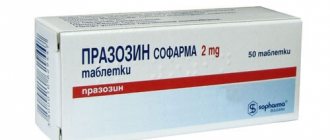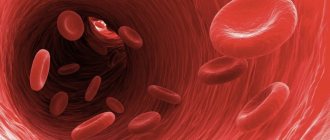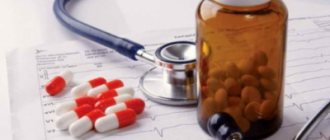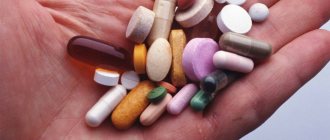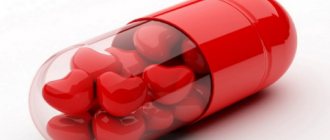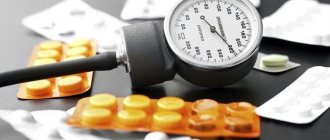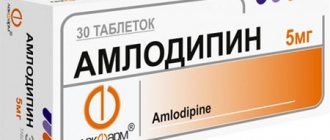Mechanism of action
Antioxidants are natural medicines, sources of electrons that remove free radicals from the body, interrupting the oxidative chain reaction. In other words, antioxidants are a natural mechanism for protecting cells from aging. The peculiarity of such drugs is that, losing electrons, the drugs do not become free radicals, that is, they do not have toxicity to organs and tissues.
Free radicals are metabolic products of redox reactions that appear in the body due to innate biochemical transformations. This is the body’s physiological response to exotoxins: nicotine, sunlight, chemicals, background radiation, drugs.
Molecules that have lost electrons try to replace them with other molecules. They take away charged particles from proteins, which deforms the DNA. This is how oxidation or biocorrosion occurs.
Free radicals are localized in cell membranes, damaging them, the cell disintegrates and dies. Antioxidants block the oxidation of neighboring molecules, potentiating the natural circulation of nutrients in the body and the synthesis of special enzymes - antioxidants, which save the cell from destruction.
If there are few antioxidants in the body and free radicals predominate, then a person is at risk of developing an oxidative stress situation that damages cells. Antioxidant drugs:
- inhibit lipid oxidation in tissues;
- saturate tissues with oxygen;
- stimulate regeneration;
- relieve inflammation;
- exhibit angioprotective properties;
- balance microcirculation and coronary blood flow;
- normalize the concentration of cholesterol in the blood;
- maintain visual acuity;
- beneficial effect on skin, hair, nails;
- activate collagen synthesis;
- remove pastiness;
- support immunity at the cellular and humoral level;
- demonstrate radioprotective activity;
- prevent viral and bacterial infections;
- normalize acid-base balance;
- improve oxygenation in the bronchopulmonary tree.
Many antioxidants are synthesized by the body on its own, but they are not enough to completely guarantee health. With age, the natural production of such biologically active substances decreases naturally. In this case, it is necessary to connect antioxidants from the outside, which:
- restore and protect DNA;
- inactivate toxic metals;
- stimulate the body's genes, increasing natural defenses;
- provide anti-cancer cell defense.
The effect of antioxidants on the body
The main effect of antioxidants is to protect tissues from free radicals. This is the name given to reactive oxygen species that are formed during life. They are capable of destroying cells as a result of peroxidation - oxidative stress. Its role in the development and progression of diseases of the cardiovascular, nervous and endocrine systems has been proven.
But interest in antioxidant therapy has an undulating course. From time to time, the effectiveness of drugs is called into question.
The ambiguity of the results of using antioxidants is due to the fact that it is not always possible to obtain predicted results with both a short and too long course, low and high doses. The role of free radicals themselves is not always only negative. For example, it is assumed that their formation in the myocardium may also have a protective function during infarction.
The most studied properties of these compounds include:
- assistance in tissue restoration after insufficient blood supply (ischemia), limiting the source of damage when arteries are blocked;
- reduction of inflammation;
- activation of microcirculation (capillary blood flow);
- protection of vessel walls from destruction;
- decreased permeability of the bloodstream;
- normalization of fat metabolism;
- prevention or slowdown of atherosclerotic changes in arteries;
- reducing the risk of primary or recurrent stroke and heart attack;
- improvement of blood flow in the myocardium and brain;
- inhibition of degenerative processes in the eyes; when used, visual acuity increases;
- getting rid of pustular and allergic skin rashes;
- restoration of the synthesis of collagen and elastin fibers, prevention of wrinkles;
- support of immune defense;
- accelerated healing of wounds and ulcerative defects;
- neutralization of the negative effects of radiation and chemotherapy.
We recommend reading the article about dietary supplements for the heart. From it you will learn about the best and advertised means, their action, and purchasing quality products to strengthen the myocardium. And here is more information about the treatment of cerebral atherosclerosis.
Types of Antioxidant Drugs
Preparations containing antioxidants are divided into hydrophobic and water-soluble. Normally, a person should consume both. Antioxidants can be divided into enzymatic and non-enzymatic. The first ones break down and remove free radicals, the second ones interrupt the chain reaction of free radicals.
Enzymes include:
- Superoxide dismutase (SOD), which, in the presence of trace elements, breaks down the peroxide precursor into hydrogen peroxide itself and oxygen (aerobic process).
- Catalase transforms hydrogen peroxide into water and oxygen, completing the detoxification process started by SOD.
- Glutathione peroxidase (GTP) and glutathione reductase are enzymes with selenium that convert hydrogen peroxide into alcohol in the liver.
Non-enzymatic forms of drugs include:
- carotenoids;
- vitamin C, E;
- plant polyphenols and glutathione.
These are antioxidants in tablets that save the power of enzyme forms.
Antioxidants can also be divided by molecular size:
- drugs with a small molecular weight neutralize active oxygen particles and remove them (vitamins C and E, glutathione, lipoic acid, carotenoids, coenzyme Q10;
- Medications with large molecular weights absorb reactive oxygen species, causing “self-fire.”
Thus, nature has surrounded man with a reliable mechanism of protection against any biophysiological accidents.
The best drugs for the brain
In the treatment of vascular diseases of the brain, the effectiveness of such medications as Cytoflavin, Ceraxon, and Mexidol has been proven.
"Cytoflavin"
It contains riboxin, succinic acid, vitamin B2, nicotinamide. They improve energy production in brain cells, blood circulation, and increase the bioelectrical activity of neurons. When using the drug, the following decreases:
- headache,
- dizziness,
- noise in ears,
- general weakness,
- anxiety,
- depressive reactions,
- forgetfulness,
- absent-mindedness.
Indicated for the treatment of ischemic stroke, its consequences, encephalopathy due to poisoning, circulatory disorders due to atherosclerosis and during long operations . It is prescribed for complications of hypertension and for their prevention, general weakness and fatigue against the background of vascular pathology.
"Ceraxon"
This drug has high therapeutic activity:
- inhibits the activity of a number of enzymes that damage the membrane of neurons;
- reduces the production of free radicals;
- supports the functioning of natural antioxidant systems;
- preserves energy reserves in brain cells and prevents their destruction;
- accelerates the restoration of functions of the cerebral cortex after injury or stroke;
- increases memory, attention and level of consciousness.
It is used in all phases of stroke and its consequences, and is indicated for the treatment of behavioral and thinking disorders with chronic lesions of cerebral vessels, neuronal destruction, and any neurological diseases .
"Mexidol"
The mechanism of its action is related to:
- suppression of the processes of peroxidation of cell membranes;
- improving the movement of neurotransmitters (intermediaries in signal transmission), facilitating communication between brain neurons;
- increased formation of dopamine;
- protecting brain tissue from oxygen starvation, stress, shock, alcohol poisoning;
- memory improvement;
- prevention of seizures;
- activation of metabolic processes;
- decrease in blood viscosity.
Indicated for the following neurological pathologies:
- acute cerebrovascular accidents;
- traumatic brain injury;
- consequences of stroke;
- vegetative-vascular dystonia;
- encephalopathy;
- anxiety disorders;
- neuroses;
- initial stages of deterioration of thinking in atherosclerosis;
- withdrawal syndrome in alcoholism;
- withdrawal from binge drinking;
- poisoning with anesthetic drugs, sleeping pills, antipsychotics.
VSD is one of the indications for prescribing the drug Mexidol.
Indications for prescribing drugs
Free radicals, destroying cells, cause many pathologies, which are the reason for prescribing antioxidants:
- tumor growth;
- Alzheimer's disease;
- Parkinson's syndrome;
- arthritis-arthrosis;
- osteochondrosis;
- osteoarthritis;
- varicose veins;
- immunodeficiency;
- allergies and anaphylaxis;
- hypertension;
- IHD;
- atherosclerotic disease;
- cataract;
- decreased visual acuity;
- intense physical activity, including sports.
ANTIOXIDANTS[edit | edit code]
Antioxidant drugs
- these are medicines of various chemical structures that inhibit or block the processes of free radical oxidation and/or help to increase the level of substances with antioxidant effects in the body.
The term “antioxidants” appeared in the 60s of the 20th century. thanks to the research of B. N. Tarusov (1954), N. M. Emanuel (1963). B. N. Tarusov established the role of lipids, especially unsaturated fatty acids, as one of the main substrates of biochemical processes, and screened the radioprotective effect of cysteine, glutathione, and thiourea. N.M. Emanuel and his students not only determined the mechanism of action of antioxidants, but also defined antioxidants as compounds that inhibit the development of free radical oxidation.
The reasons for the activation of lipid peroxide oxidation (LPO) can be different, including hypoxic conditions; inflammatory, neoplastic or allergic processes; stress of any origin; atherosclerosis, as well as taking certain drugs with pro-oxidant properties (tetracyclines, isoniazid, paracetamol, aminazine, primaquine, adriamycin, rubomycin, iron, copper, mercury, lead, etc.) and performing medical procedures (oxygen therapy, hyperbaric oxygenation, ultraviolet irradiation) etc. In sports practice, such reasons may be excessive physical activity and overtraining conditions, leading to depletion of the body’s own antioxidant system.
In the human body under normal conditions, 98-99% of molecular oxygen undergoes tetravalent reduction in the cytochrome system without the formation of stable intermediate products:
02+4е" + 4Н+ => 2Н20.
Only 1-2% of the total amount of oxygen consumed in the body undergoes monovalent reduction with the formation of reactive oxygen species (ROS), i.e. compounds with an unpaired electron. It is important to pay attention to the fact that oxygen itself is an acceptor for H+ and is converted into ROS, therefore, with an excess of oxygen in the gas mixture, the formation of ROS significantly increases. ROS include superoxide anion (0~), hydrogen peroxide (H2O2), hydroxyl ion (OH-) and singlet (atomic) oxygen (O2).
Main sources of ROS:
- neutrophils and other phagocytes (monocytes, macrophages, eosinophils) in the process of activation of their functional state. The membranes of these cells contain the enzyme NADP oxidase, which is capable of catalyzing the process of reducing molecular oxygen into superoxide anion (0~), using NADP as an electron donor. In the normal state, this enzyme is in an inactive form, but when phagocytic cells adhesion to bacteria or other absorbed substrates, it is activated. The resulting superoxide radical passes into the phagosome, which is formed during invagination of the membrane of the phagocytic cell, and acts on a foreign object;
- Hypoxanthine, which accumulates during hypoxia and is utilized during reoxygenation, leads to the formation of ROS. It should be emphasized that after hypoxia, the use of oxygen therapy requires great caution, since this increases the formation of ROS under the influence of xanthine oxidase, which catalyzes the oxidation reactions of hypoxanthine to xanthine, and the latter to uric acid with the formation of a superoxide radical, which can then be converted into other ROS. In most cells, the bulk of the enzyme is present in the form of NAD-dependent xanthine dehydrogenase, which can be converted to the oxidase form by specific oxidation of protein sulfhydryl groups or limited proteolysis;
• these are the processes of formation of arachidonic acid metabolites, in particular prostaglandins G, and H2 (endoperoxides) and leukotrienes (LtB4, etc.), as well as the processes of formation of catecholamines, for which ROS are obligatory reaction products;
• another source of ROS in the body is the autoxidation of hemoglobin to methemoglobin with the formation of superoxide anion;
• increases the amount of ROS, in particular, their non-enzymatic formation in the Haber-Weiss reaction during the interaction of a superoxide radical with hydrogen peroxide in the presence of metal ions with variable valence (iron or copper) or in the Fenton reaction during the interaction of hydrogen peroxide with divalent iron. In both cases, a hydroxyl ion is formed.
ROS can damage the structure of various proteins and enzymes, which disrupts biocatalytic processes; influence the genetic apparatus of the cell, which consists in destructuring DNA and disrupting its synthesis. However, one of the most sensitive to the action of free radical forms of cell components are unsaturated fatty acids that are part of the phospholipids of cellular and subcellular membranes. The interaction of free radicals with polyunsaturated fatty acids leads to chain reactions known as LPO reactions.
It should be emphasized once again that limited lipid peroxidation processes constantly occur in all cells normally, being one of the ways of their metabolic regulation. But excessive activation of LPO leads to modification of membrane lipids, a decrease in membrane fluidity and membrane potential, and an increase in membrane permeability for various ions, in particular for Ca2+, which activates many proteolytic and lipolytic enzymes, which significantly impairs the functions of the cell and can even lead to its death. Finally, it should be noted that hydroperoxides formed during lipid peroxidation and their breakdown products are cytotoxic.
To protect cells from the damaging effects of ROS, they have enzymatic and non-enzymatic ROS inactivation systems:
- superoxide dismutase (converts O" to H2O2);
- catalase (converts H202 into H20 and 02);
- glutathione peroxidase and other types of peroxidases (convert H2O2 into H20 and O2);
- ascorbic and uric acids (reduce water-soluble free radicals);
- α-tocopherol and (3-carotene (bind fat-soluble free radicals);
- melatonin (binds fat- and water-soluble radicals);
- chelating agents - transferrin, lactoferrin, ceruloplasmin and albumin (prevent the catalysis of free radical reactions using metals of variable valency).
So, in the human body there are both systems for generating ROS and quite effective systems for protecting intact cells from such forms. Normally, there is an equilibrium between these systems, but under various pathological conditions it shifts towards uncompensated ROS production. The disturbed balance can be balanced with the help of antioxidants, which can directly interact with ROS, eliminate iron and copper ions that activate free radical reactions, change the structure of membranes, limiting the availability of polyunsaturated fatty acids (PUFAs) for oxidants, increase the activity of antioxidant endogenous enzymes, etc.
Classifications of antioxidants[edit | edit code]
Classification of antioxidants that are drugs in origin:
- Substrates for free radical oxidation are preparations of unsaturated fatty acids.
- Natural antioxidants are preparations of amino acids, proteins, nucleic acids and their derivatives that react with free radical oxidation products.
- Bioantioxidants are preparations of vitamins, hormones, flavonoids.
- Free radical oxidation modulators are preparations containing microelements.
Classification of antioxidants by mechanism of action:
- Antiradical inhibitors - drugs containing polyphenols, etc.
- Antioxidant preparations that destroy peroxides - sulfur-containing compounds, etc.
- Preparations that bind catalysts of free radical processes - metal ions of variable valency.
- Medicines that inactivate singlet oxygen are vitamin preparations (tocopherols, carotenoids, etc.).
The pharmacokinetics of most antioxidant drugs are discussed in the relevant sections.
Pharmacodynamics[edit | edit code]
Key aspects of the mechanism of action for all natural antioxidants:
- Direct interaction with oxygen free radicals.
- Binding of iron and copper ions that catalyze free radical reactions.
- Changing the structure of the cell membrane (preventing the interaction of oxidizing agents with substrates).
- Increased activity of endogenous antioxidant systems (glutathione reductase, catalase, superoxide dismutase).
The main preparations of unsaturated fatty acids are preparations containing omega-3 fatty acids: epadol, fish oil, Tecom, Vitrum Cardio, Omacor (also contains tocopherol). The main omega-3-polyunsaturated fatty acids include eicosapentaenoic and decosohexanoic acids, the introduction of which from the outside restores their normal ratio in the body, inhibits the release of arachidonic acid, reduces the level of triacylglycerols, low-density lipoproteins and very low-density lipoproteins, cholesterol, increases the level of anti-atherogenic lipoproteins high density.
Due to a decrease in the content of arachidonic acid, the level of thromboxane A in platelets and blood viscosity decreases, which helps to reduce the level of blood coagulation factors and intensify fibrinolysis processes. The level of tissue plasminogen (PAI-1) also decreases, the plasticity of erythrocyte membranes increases, and the rheological properties of blood in general improve.
Essentiale
- a complex preparation containing, in addition to phospholipids, a complex of vitamins with antioxidant (tocopherol, cyanocobalamin) and antihypoxic properties (thiamine, riboflavin, nicotinamide, pyridoxine). Phospholipids determine membrane stabilization and antioxidant properties, vitamin preparations potentiate the effect, stimulate oxidative decarboxylation, the activity of transketolase and other enzymes. The composition of the drug essel-forte includes essential lipids with vitamins.
Liping
(lecithin preparation) - a natural antioxidant and antihypoxant, restores the functional activity of the endothelium, supports the body's antioxidant systems, has a membrane-protective, immunomodulatory effect, has a positive effect on pulmonary ventilation and surfactant synthesis.
Antioxidant properties are expressed in thioctic acid preparations - berlithione
and
espalipona
. Thioctic acid is a vitamin-like substance that is endogenously formed in the body and is involved in the oxidative decarboxylation of α-keto acids as a coenzyme. In case of hyperglycemia, thioctic acid preparations can reduce blood glucose levels and also have a hypolipidemic antioxidant effect.
Preparations of amino acids, nucleic acids, peptides and their derivatives can be used as single preparations, as well as complexes; Some of them are obtained by synthesis, others are organ extracts or blood hydrolysates. Preparations of amino acids, nucleic acids and their derivatives began to be used in the 50-60s of the last century. Among amino acid preparations, glutamic acid should be noted - a drug that, along with a neurotransmitter effect, activation of acetylcholine synthesis, stimulation of redox and energy-producing processes, the ability to neutralize and remove ammonia, has a certain antioxidant effect, which also determines its anti-hypoxic properties.
Yuzhakov Anton About Glutargin and triosaline from 4.00 minutes
Glutargin
(glutamic acid + arginine) has antioxidant, antihypoxic, membrane-stabilizing, cardio- and hepatoprotective activity, and has a hypoammonemic effect. Corargin (riboxin + arginine) is also an antihypoxant, antioxidant, cardioprotector; L-arginine, which is part of the drug, activates NO synthase.
Preparations of aspartic acid - asparkam
and
panangin
(potassium, magnesium aspartate) increase the content of K+ and Mg2+ ions in the cell, compensate for the deficiency of aspartic acid, stimulate oxidative phosphorylation and ATP formation, improve skeletal muscle tone and motility of the digestive tract by facilitating the release of acetylcholine; have some antioxidant effect.
Amino acid taurine
(monopreparation dibikor and as part of the drug kratal) has cardioprotective, stress-protective, hypoglycemic, neurotransmitter effects, regulates the release of GAM K, adrenaline, prolactin. Taurine protects lung tissue from damage by irritating substances and is a strong antioxidant.
N-acetylcysteine
not only has an expectorant, pneumoprotective, cardioprotective, detoxification effect, but is also a powerful antioxidant.
Cerebrolysin
(hydrolyzate of pig brain substance freed from protein), containing a complex of peptides and amino acids, reduces the lactate content in brain tissue, stabilizes cell membranes, maintains calcium homeostasis, reduces the neurotoxic effect of excitatory amino acids (glutamate), regulates cerebral circulation, and is a powerful antioxidant.
Cerebrocurin
, containing amino acids, peptides and low-molecular proteolysis products, has a significant energy-producing, protein-synthesizing, antioxidant effect, therefore it has a neuro-cardio-hepatoprotective, nootropic effect, regulates cerebral circulation, emotional and mnestic functions.
Specific pharmacological properties of carnitine
covered in the corresponding section. The drug normalizes fat metabolism, limits lipid oxidation, inhibiting the formation of hydroperoxides and fatty acids, has a membrane-protective effect, and is a component of the drug cardonate.
Sodium nucleinate
characterized by immunostimulating and leukopoietic effects, is an antioxidant.
Actovegin
- highly purified blood hemodialysate containing oligopeptides, nucleosides, intermediate products of carbohydrate and fat metabolism. The drug increases the metabolism of high-energy phosphates, enhances oxidative phosphorylation, increases the activity of alkaline phosphatase, the influx of potassium and the breakdown of anaerobic glycolysis products, and exhibits antioxidant and antihypoxic effects.
Of the non-coenzyme vitamin preparations that simultaneously have pronounced antioxidant and antihypoxic effects, it should be noted coenzyme Ql0, the drug inosine (riboxin), which has an energy-stimulating and antioxidant effect, corargin (containing inosine and L-arginine), which stimulates energy and plastic metabolism, has antianginal, anti-ischemic effect.
Energostim
- a combined preparation containing, in addition to inosine, nicotinamide dinucleotide (NAD) - a coenzyme of dehydrogenases of glycolysis and the Krebs cycle; Cytochrome C is an enzyme of the electron transport chain, with which ATP synthesis is coupled in mitochondria through oxidative phosphorylation. Due to the composite composition, Energostim, through the mechanism of pharmacological effects on organs and tissues, has a complementary antihypoxic and antioxidant effect.
Vitamin preparations with pronounced antioxidant properties belong to both water-soluble and fat-soluble drugs. Of the fat-soluble drugs, tocopherol, retinol and its provitamin - carotene and other drugs containing carotenoids (for example, sea buckthorn oil) have the greatest antioxidant potential. Of the preparations of water-soluble vitamins, the greatest antioxidant effect was observed in ascorbic acid, nicotinic acid and nicotinamide, cyanocobalamin, vitamin P (in the form of rutin, quercetin), which are described in a separate section.
Bitam
is a complex of vitamins (B, B2, B3, B5, B6) and microelements (Fe3+, Zn2+, Mn2+, Cu2+, Co2+, Cr3*), and also contains mefenamic acid. Bitam increases the body's ability to perform intense physical activity, has anti-stress, radioprotective, hematopoietic, hepato- and cardioprotective effects.
Cardonat
contains carnitine chloride, pyridoxal phosphate, cocarboxylase chloride, lysine hydrochloride. These components are involved in the 3-oxidation of fatty acids to acetyl coenzyme A. The drug activates the processes of assimilation and growth, has anabolic cardio-, hepato-neuroprotective activity, and significantly increases mental and physical performance.
Quercetin, corvitin, lipoflavone have antioxidant and immunomodulatory properties. The drugs reduce the production of cytotoxic superoxide anion and normalize the activation of the subpopulation of lymphocytes. They have a capillary stabilizing effect, modulate the activity of enzymes involved in the degradation of phospholipids (phospholipases, phosphogenases, cyclophosphogenases), affecting free radical processes and taking part in the synthesis of nitric oxide, proteinases. Quercetin and similar drugs exert their anti-inflammatory effect by inhibiting 5-lipoxygenase and inhibiting the synthesis of leukotrienes LTC4 and LTB4. The drugs inhibit thrombogenesis processes, as they prevent an increase in the concentration of intracellular calcium in platelets and their aggregation.
Among medicines containing flavonoids, it is worth noting preparations of hawthorn (tincture, liquid extract, cardioplant), motherwort (tincture), Echinacea purpurea (tincture, liquid extract, Echinacea ratiopharm), Rhodiola rosea (tincture, liquid extract), etc. Fruits hawthorn, in addition to bioflavonoids, contains choline, acetylcholine, tannins, phytosterols, triterpene acids, etc., which explains the cardioprotective and antiarrhythmic effect without reducing myocardial contractility. Hawthorn has a pronounced antioxidant and antiradical effect. A similar effect is typical for most of the listed drugs, which, in addition, have a hepatoprotective and immunomodulatory effect. The antioxidant effect is also expressed in sea buckthorn oil, which contains unsaturated fatty acids, tocopherol, as well as in domestic herbal medicines in drops (cardiofit, cardioton, go moan).
It should be noted that, thanks to bioflavonoids, hepatoprotectors also have antioxidant properties - legalon, silibinin, karsil (darsil), hepabene, hepatofalk, etc.
Antioxidant activity is most pronounced in microelements - selenium, zinc, molybdenum, nickel, tungsten. Selenium is a component of glutathione peroxidase and reduces the formation of hydroperoxides. It is most effective when used in combination with biological ligands, with transporters of microelements, therefore it is often used in multivitamin complexes (Triovit, Vitamax, Centrum, Oligogal, etc.). Zinc is included in the preparations Zincteral, Vitam, etc. Due to the fact that zinc is a component of more than 70 metalloenzymes, it promotes physical and mental development and has immunomodulatory properties.
Of the synthetic drugs, dimephosphone
, which increases the activity of the antioxidant system of the blood and, in particular, the redox system of glutathione by counteracting the oxidation of its thiol group. Dimephosphone has a pronounced immunomodulatory effect.
Antioxidant effect of unithiol
manifests itself due to sulfhydryl groups, which enter into oxidation reactions and thereby protect the sulfhydryl groups of other biologically active substances, such as glutathione.
Thiotriazolin
inhibits lipid peroxidation, activates antioxidant systems in vital organs, including ischemic areas of the myocardium, activates anaerobic glycolysis, reduces inhibition of oxidation processes in the Krebs cycle, preserves ATP reserves. The drug has a pronounced cardio-, hepato-, neuroprotective effect, membrane stabilizing, anti-ischemic, immunomodulatory effect. Thiotriazolin prevents damage and death of hepatocytes, reduces the degree of fatty infiltration of the liver, the prevalence of necrosis of its cells, activates the repair processes of hepatocytes and normalizes protein, carbohydrate, lipid, and pigment metabolism in them. The drug reduces the sensitivity of the myocardium to catecholamines, prevents the progression of inhibition of cardiac contractility, stabilizes and reduces the size of the zone of necrosis and ischemia of the myocardium, improves the rheological properties of blood due to the activation of the fibrinolytic system.
Indications for use[edit | edit code]
Natural antioxidants are used as additional means for the correction of hypertriacylglycerolemia, hyperlipidemia, hypercholesterolemia and the treatment of atherosclerosis, coronary heart disease and inflammatory lung diseases, and can also be used to prevent thromboembolic complications.
Essentiale is used in cardio- and hepatology, pulmonology, ophthalmology, and obstetrics.
Berlition is used for diabetic neuropathy, espalipon is also used as a hepatoprotector, lipid-lowering agent and detoxifier for xenobiotic intoxication.
In medical practice, glutamic acid is indicated for epilepsy, psychosis, reactive depression, and mental exhaustion.
Asparkam, panangin are prescribed for angina pectoris, cardiosclerosis, myocardial dystrophy, arrhythmias accompanied by hypokalemia.
Dibikor is recommended in the complex treatment of cardiovascular failure and diabetes mellitus.
Kratal is used for vegetative neuroses, vegetative-vascular dystonia, post-radiation syndrome, and in the complex treatment of chronic cardiovascular failure.
Acetylcysteine is indicated mainly in the treatment of diseases of the upper respiratory tract, intoxication with paracetamol and cardiac glycosides.
Cerebrolysin is prescribed for ischemic brain damage (stroke), cerebrovascular, including organic pathology (Alzheimer's disease, dementia), endogenous depression.
Cerebrocurin is used for diseases characterized by dysfunction of the central nervous system, including as an adjuvant after neurosurgical reconstructive operations. It is also indicated in ophthalmology, mainly for diseases associated with organic disorders (senile macular degeneration, diabetic retinopathy, etc.).
Sodium nucleinate is used for immunodeficiency states, dystrophies, and leukopenia.
Actovegin is indicated for organic lesions of the central nervous system, eyes, to accelerate the regeneration of the skin and mucous membranes (burns, wounds).
Hawthorn preparations are used for functional disorders of the heart, motherwort - also as a sedative, Echinacea and Rhodiola - as immunomodulators and general tonics. Sea buckthorn oil is used for stomach and duodenal ulcers, hepatitis, and prostatitis.
Vitamin preparations are widely used in clinical practice.
Preparations containing the microelements zinc and selenium are indicated mainly for immunodeficiency conditions.
Thiotriazoline is prescribed for chronic hepatitis of various etiologies, liver cirrhosis, coronary heart disease (angina pectoris and rest, post-infarction cardiosclerosis, heart rhythm disturbances).
Complex herbal medicines in drops (cardiofit, cardioton, idiston) are used for neurocirculatory dystonia.
Side effects[edit | edit code]
Preparations of unsaturated fatty acids (Essentiale, Lipin, Berlition, Escalipone) can cause hypersensitivity and dyspeptic disorders in the form of belching, nausea, heartburn, and diarrhea.
Glutamic acid can increase excitability, cause vomiting, diarrhea, anemia, and leukopenia.
When asparkam is taken orally, a burning sensation, hyperkalemia, hypermagnesemia, which are characterized by dyspeptic disorders, facial hyperemia, hypotension, hyporeflexia, paresthesia, and neuromuscular blockade, may occur.
Taurine and kratal can cause allergic reactions and dyspeptic disorders.
Side effects of acetylcysteine manifest themselves mainly in the form of dyspeptic disorders, headaches, tinnitus, stomatitis, allergic reactions, hypotension, and tachycardia.
Cerebrolysin can cause a slight increase in temperature, the manifestation of individual hypersensitivity, Cerebrocurin - hypersensitivity phenomena.
Sodium nucleinate can lead to dyspeptic disorders and allergic reactions.
Side effects of Actovegin include, occasionally, allergic reactions.
The use of herbal remedies containing bioflavonoids can lead to allergic reactions and dyspeptic disorders.
Side effects of drugs containing vitamins (quercetin, corvitin, lipoflavone, thiotriazoline) and microelements are characterized mainly by allergic reactions and hypersensitivity. Zinc and selenium compounds in complex preparations rarely cause dyspeptic and allergic phenomena. The complex drug Vitam can cause the formation of stones, a similar effect was noted with ascorbic acid.
List of necessary and in demand drugs
The maximum positive effect for the body can only be achieved by taking a wide variety of antioxidants. Some of the biologically active substances are produced by the body, some are supplied with food, but basically, a person receives antioxidants along with dietary supplements, vitamins, and minerals from the outside. The main antioxidant drugs are presented in the table:
| Name of drugs | Cost in rubles |
| Glutathione Solgar | 1 580 |
| Vitamin C | 118 |
| Vitamin E | 123 |
| Coenzyme Q (CoQ10, Ubiquinone) | 848 |
| Alpha Lipoic Acid (ALA) | 426 |
| Resveratrol | 1 902 |
| Vitamin A | 60 |
| Lutein | 315 |
| Astaxanthin | 1 337 |
| Mexidol | 217 |
| Emoxipin | 211 |
What antioxidants are best to take?
As a rule, despite any admonitions from doctors, our diet still looks inadequate and is often diluted with harmful fast food and other things that are eaten in one sitting under one simple motto: “If you really want it, then you can.” For such cases, all kinds of dietary supplements have been created, which not only reduce the harm caused by poor diet and bad habits, but also replenish the reserves of antioxidants and other beneficial substances.
The best course of antioxidants is offered by the famous pharmaceutical company Vision. The benefits and safety of such drugs for the body are undeniable, because:
- they are made from natural plant ingredients and do not contain harmful additives;
- absorbed by 98%;
- have a synergy effect - the components enhance each other’s effects;
- side effects and overdose are excluded;
- thanks to the technology of cryogenic crushing and drying of plants, all valuable substances are preserved as much as possible;
- meet the requirements of GMP and ISO22000 standards;
- have certificates from the Ministry of Health of all countries where they go on sale;
- ideal in terms of price-quality ratio.
Many patients, when choosing antioxidant drugs for themselves, are looking for details about what they are, what each component of their composition means, what their benefits and harms are. Most information can be obtained by studying ratings and reading customer reviews of such products: they talk about their experience, how good or bad the drug was for their health. You can read patient opinions about Vision products, for example, on a health website.
Literature
- Andriadze N.A., Sukoyan G.V., Otarishvili N.O, et al. Direct-acting antihypoxant Energostim in the treatment of AMI. Ross. Honey. Vesti, 2001.
- Boyarinov A.P., Penknovich A.A., Mukhina N.V. Metabolic effects of the neurotropic action of actovegin under hypoxic conditions. Actovegin. New aspects of clinical application. M., 2002.
- Korovina N.A., Ruuge E.K. The use of coenzyme Q10 in prevention and treatment. The use of the antioxidant drug kudesan (coenzyme Q10 with vitamin E) in cardiology. M., 2002.
- Shilov A.M. Antihypoxants and antioxidants in cardiological practice.M. 2006.
- Shkolnikova M.A. Report of the Association of Pediatric Cardiologists of Russia on the use of Kudesan. The use of the antioxidant drug kudesan (coenzyme Q10 with vitamin E) in cardiology. M., 2002.
Lyudmila Zhavoronkova
Higher medical education. 30 years of working experience in practical medicine. More about the author
All articles by the author
How often can you take antioxidant vitamins from Vision?
This is one of the most frequently asked questions, since people are afraid of overdose and have heard about the side effects of many such drugs. However, in the case of Vision, there is no need to be afraid of this, since the natural composition of the tablets is perceived by our body effectively and naturally, due to which the components are well absorbed and do not accumulate. Of course, each drug has its own recommendations for use, which must be followed for the most effective treatment.
Antihypoxants
Patients call many antihypoxants “vascular drugs” or drugs for the treatment of heart disease, since they are recognized as the best in the treatment of pathology of the cardiovascular system. In principle, all drugs that improve blood circulation (vascular) also perform an antihypoxic function. For example, any person who is affected by problems with cerebral circulation or cardiac activity has probably more than once received medications such as:
- Vinpocetine and Cavinton , which are the same thing, are herbal preparations (derivatives of the main vinca alkaloid - vincamine), they are considered the best in their group, since they do not have a large set of contraindications and at the same time noticeably improve blood circulation and metabolism in brain tissue;
- Piracetam - improves cerebral blood flow and metabolic processes in brain tissue, protects brain neurons from the damaging effects of hypoxia, has a positive effect on memory and attention, helps in learning, is used in neurology, psychiatry, addiction medicine, pediatrics;
- Riboxin - normalizes metabolic processes in the heart muscle and reduces the manifestations of oxygen starvation of tissues;
- Mildronate (Meldonium) is an analogue of a component present in every living cell of the human body (γ-butyrobetaine), normalizes metabolism and energy supply to tissues subjected to oxygen starvation. Recently, in the sports community, the drug was recognized as doping and became a reason for the disqualification of some talented Russian athletes;
- Cytochrome C - indicated for use in newborns (hypoxia as a result of asphyxia), as well as for heart failure, bronchial asthma, myocardial hypoxia (coronary heart disease);
- Inosine – activates enzymes of the tricarboxylic acid cycle (TCA cycle, Krebs cycle), maintains energy balance, has a positive effect on metabolic processes in the myocardium, increases the body’s endurance, stimulates the immune response;
- Trimetazidine – has a positive effect on cardiac muscle cells, optimizes their metabolic and functional abilities, helps normalize blood pressure, increases tolerance to stress (mental and physical);
- Phezam is a combination drug that provides a powerful antihypoxic effect.
Of course, the list of drugs is not limited to the above-mentioned drugs; it is quite wide, and, moreover, many of them have several dosage forms. For example, Vinpocetine is available in tablets (Vinpocetine, Vinpocetine forte, Vinpocetine-SAR), aerosols (Vinpocetine-AKOS), concentrates for the preparation of infusion solutions (Vinpocetine-AKOS, Vinpocetine-SAR, Vinpocetine-ESKOM) or Riboxin, produced in tablets (Riboxin -Ferein, Riboxin-Lect) and solutions for intravenous administration (Riboxin Bufus).
Medications with a pharmacological “antihypoxic” effect include Semax nasal drops, which, in addition to antihypoxic, provide an antioxidant and angioprotective effect, as well as Solcoseryl gel and ointment, which have a regenerating and wound-healing effect.
Meanwhile, many of the above list of drugs, although designated in some reference books as antihypoxic agents, are not devoid of antioxidant action, so one should not be surprised if in other sources they are classified as antioxidants and antihypoxic agents.
